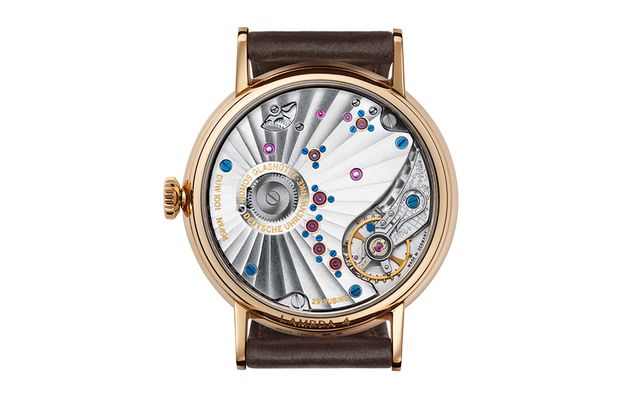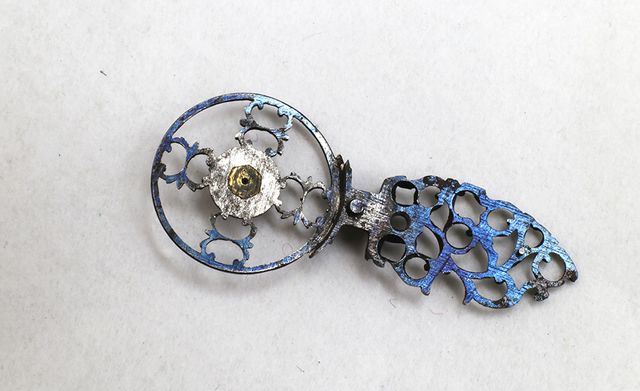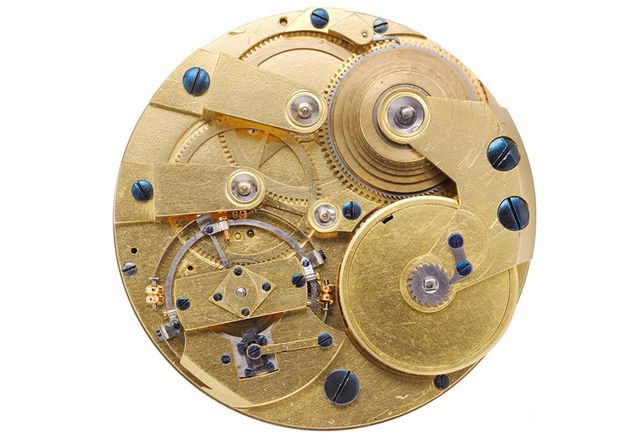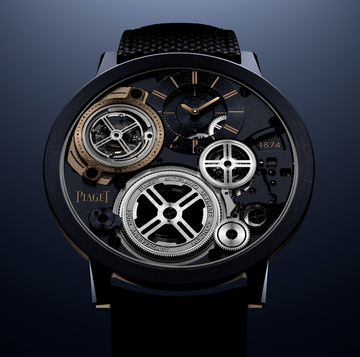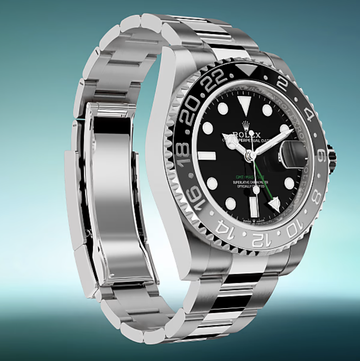The purpose of jewels in watch movements is to reduce friction - that's the easy part. Their use dates back to the start of the eighteenth century, in London, when the manufacturing skills were developed to fasten the jewels to the metal plate; and more importantly, how to drill a precise hole through the jewel, or into the jewel so that it is smooth and uniform. If jewels are going to be used in watch movements to hold a pivot (bearings and endstones), these were the two problems to surmount. Before gemstones the pivots ran directly into the plate. Friction was the main problem and this was solved at the time with a variety of oils with varying viscosity. Accurate timekeeping required that at least the degree of friction be known; and that friction was consistent.
But the more interesting part of the story has little to do with horology and everything to do with politics, subterfuge and human nature. And the ultimate irony is that the widespread use of jewels was only guaranteed thanks to an effort to restrict their use.
Clockmaking in London, at the beginning of the eighteenth century was recognised as a trade more akin to science than to metalworking; clockmakers were given their own company by Royal Charter, granted by King Charles 1, in 1631. The company was charged with preserving and maintaining, “.. by the name of the Master, Wardens, and Fellowship, the Art or Mystery of Clockmaking of the City of London”. In particular, the company was allowed to act as an individual would, headed by the Master, in legal matters: “That as a body the Company should have the same power as an individual to plead and defend any cause in any court.” Most importantly, the Royal Charter granted almost universal and monopoly powers to the Company: “That the Court may create reasonable laws and ordinances (in writing) from time to time, which they believe to be honest, and good for the Company.”
Equally, London was a hive of scientific and industrial activity. The necessity of profitable trade required a solution to the longitude problem. With increasing evidence in favour of the need for timekeeping to measure the distance from a given location on earth, there was a need to develop a clock (or watch) mechanism that was both accurate and consistent. We all know it was Harrison who eventually cracked longitude, but before he set to work on his groundbreaking clocks, the basic problem of consistency needed to be addressed.
Into the fervent world of real life problems and necessary solutions in mathematics walked a young mathematician from Switzerland, ironically enough: one Nicolas Fatio de Duillier. For those who may not recognise the name, de Duillier was the very close companion of one Sir Issac Newton. He had fallen out of favour with Newton, however, and was looking for other means to make money.
De Duillier proposed that jewels, with accurate and precisely drilled holes, could provide a means of holding pivots and allowing wheels to turn with less friction and more consistency. Mounting the jewels was not the problem; it was the second problem that required a solution. To drill such small holes in gemstones required a diamond drill; in the 1690s de Duillier had perfected a method for doing just that. Having tried unsuccessfully to interest Parisian watchmakers in his development, de Duillier came to London and teamed up with two French watchmakers, brothers who were already plying their trade in London as Freemen of the Worshipful Company of Clockmakers: Pierre and Jacob DeBaufre, to file English patent No 371, on May 1, 1704 for the “…manufacture of bearings for watches made of gemstone.” The patent was initially granted for 14 years.
In December 1704, the same applicants (Fatio de Duillier and the DeBaufre brothers) petitioned the House of Commons for an Act for “…the sole applying precious and more common stones in Clocks and Watches”, and for extending the term of their patent. By December 11, 1704, the Court of the Clockmaker’s Company was made aware of the petition and extension to the patent. Quite naturally, the Clockmaker’s Company objected as the patent would have given the holders the sole rights to use any sort of jewels in clocks or watches.
The new patent was not just for jewels in watches but would have extended to any use within watches, including endstones and for bearings for pivots. Any watch made by any of the Clockmakers Company would then require a license to use gemstones in the manner specified by the patent. Clockmakers would no longer control the production and science connected with watches – and, on a more prosaic but fundamental level, if someone else owns the patent, then the company cannot keep all profits for its members, and with it, maintain its monopoly over the art and mystery of watchmaking (as its Royal Charter required). The last thing the Company wanted to do was hand over part of the profits to a third party or person. Even though the DeBaufre brothers were Freemen of the Company, De Duillier wasn’t.
The Clockmakers Company therefore petitioned Parliament to revoke the patent. As evidence, the Company claimed that the fixing and use of jewels in the movement as proposed in de Duillier’s patent was nothing new. To prove their point the Company produced a watch, dated from 1675, by Ignatius Huggerford which had a diamond endstone over the pivot holding the balance wheel. The Company asserted that as the jewel was fitted as part of the movement that the patent had no merit as it represented knowledge that was already known to the Company and used by its Liverymen and Freeman involved in the manufacture of watches. To all intents and purposes a casual inspection of the watch indicates just that: an endstone that sits over the pivot for the balance wheel.
But here is where it all gets interesting. After the evidence was given to the House of Commons (by the Master, Benjamin Graves) in January 1705, the Clockmaker’s Company acquired the Ignatius Huggerford watch from its owner, a Mr. Henry Magson, for £2 10s (around £260 in today’s money but equivalent to a month’s wages for a skilled craftsman), and kept it locked away with the Master of the Company in case it was required to testify against the Patent in the future. The owner of the watch before Magson, a Mr. William Scale was paid 10 shillings (around £60 today) for appearing before the Commons committee to prove he had the watch before the Patent had been filed and to testify that he had sold the watch to Mr. Magson (for an undisclosed sum). It was a fait accompli. The leading Company of Clockmakers had attested that the watch already fulfilled the method laid out in the patent and the owner of the watch attested he had owned it years before the patent was filed. The patent had no merit, and so Parliament ruled. De Duillier and the DeBaufre brothers’ had come up against the commercial might and cunning of the City of London, and been outmanoeuvred.
To ensure that the patent stayed buried the watch was kept locked away from view until the mid-nineteenth century when a member of the Court of the Worshipful Company of Clockmakers, a Mr. E. J. Thompson, examined the watch and authored a report. He concluded, on the matter of a jewel placed in the movement: “The movement is not in any sense jewelled, the verge holes being of brass. A piece of coloured glass or soft stone fastened in a disc of silver and burnished into a sink in the steel cock gives the fictitious appearance of jewelling.” The watch was not jewelled in the sense that we would think of today, or in the eighteenth century (as it turns out). There was nothing functional about the jewel. It was there for decorative – some would say deceptive – purposes only.
However, the idea had taken hold and with no patent in place the idea of using jewels in watch movements became pervasive. Watchmaking and clockmaking in England progressed using jewels as the holding element within the movement, enabling Harrison among others to create clocks that held a hitherto unmatched degree of accuracy. By hoodwinking Parliament, the Company had done De Duillier out of a fortune but without the actions of the Company the use of jewels would have been greatly restricted. It might have hindered the growth in the production of watches in London in the eighteenth century and with it England’s place in the world as the leading trading nation.
It was the Court and Master of the Worshipful Company of Clockmakers (that included the likes of Thomas Tompion and Daniel Quare) that turned clock and watch manufacture into a well defined and necessary part of the daily life of all. Gone were the days when a clock, and certainly a pocket watch, were an expensive and talking point object for the noble and well-to-do household. Watches and clocks were now a necessary part of timekeeping for daily life, for the navigation of ships across the seas, and to understand the nature and rhythms of the heavens above.
It would be another lifetime – 1768, to be precise – before the idea would be taken up by Ferdinand Berthoud, the first continental watchmaker to adopt jewelled movements. From there, it spread to the whole Swiss watch industry and beyond, and – with the major change being the introduction of synthetic sapphires – remains a key element of movement construction to this day.

